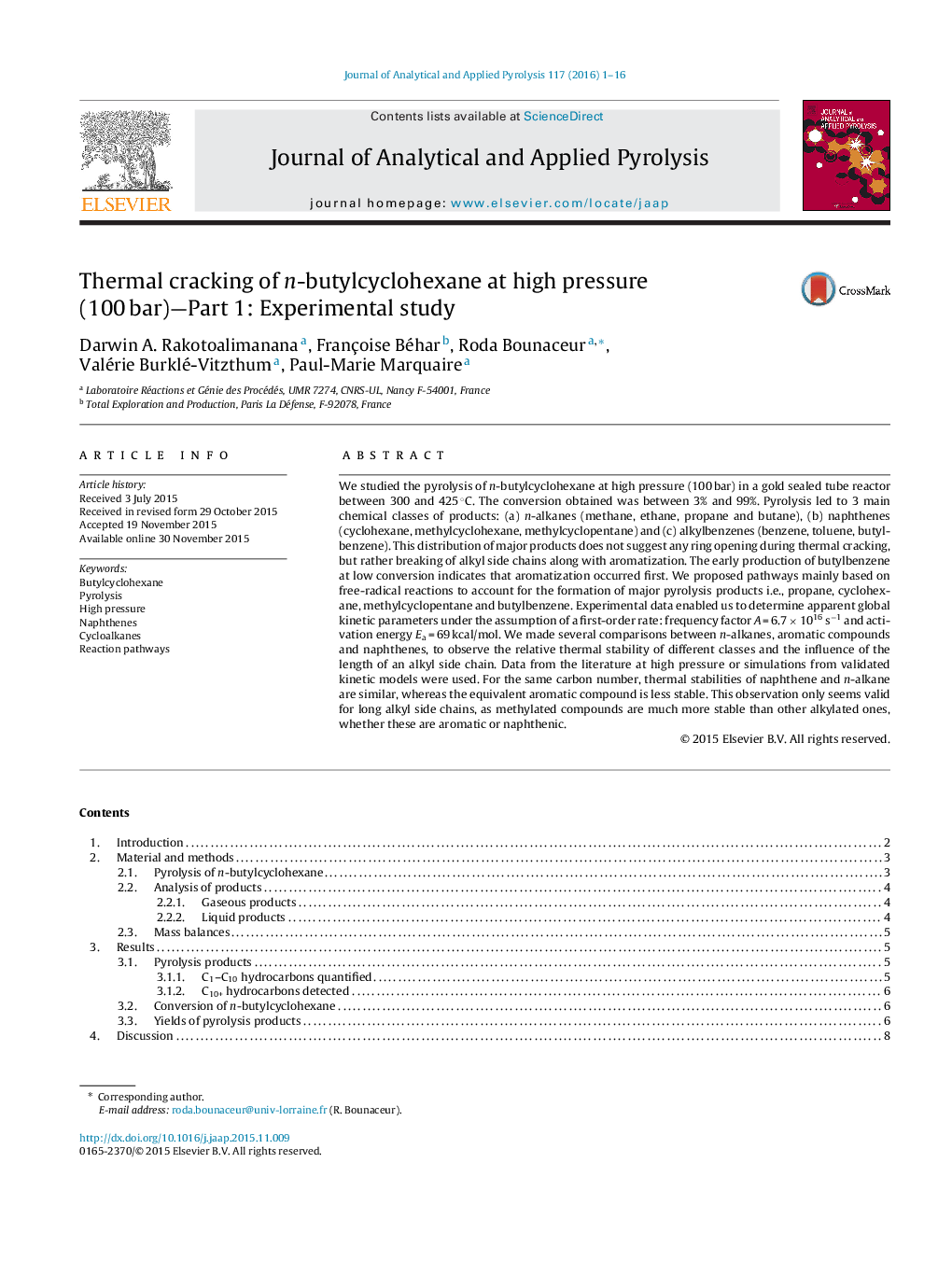| کد مقاله | کد نشریه | سال انتشار | مقاله انگلیسی | نسخه تمام متن |
|---|---|---|---|---|
| 1196609 | 1492960 | 2016 | 16 صفحه PDF | دانلود رایگان |

• Experimental study of the pyrolysis at 100 bar of n-butylcyclohexane in gold sealed tubes.
• Pyrolysis mainly leads to n-alkanes, alkylcyclohexanes and alkylbenzenes.
• Main routes of formation of n-alkanes and aromatics from a naphthene are described.
We studied the pyrolysis of n-butylcyclohexane at high pressure (100 bar) in a gold sealed tube reactor between 300 and 425 °C. The conversion obtained was between 3% and 99%. Pyrolysis led to 3 main chemical classes of products: (a) n-alkanes (methane, ethane, propane and butane), (b) naphthenes (cyclohexane, methylcyclohexane, methylcyclopentane) and (c) alkylbenzenes (benzene, toluene, butylbenzene). This distribution of major products does not suggest any ring opening during thermal cracking, but rather breaking of alkyl side chains along with aromatization. The early production of butylbenzene at low conversion indicates that aromatization occurred first. We proposed pathways mainly based on free-radical reactions to account for the formation of major pyrolysis products i.e., propane, cyclohexane, methylcyclopentane and butylbenzene. Experimental data enabled us to determine apparent global kinetic parameters under the assumption of a first-order rate: frequency factor A = 6.7 × 1016 s−1 and activation energy Ea = 69 kcal/mol. We made several comparisons between n-alkanes, aromatic compounds and naphthenes, to observe the relative thermal stability of different classes and the influence of the length of an alkyl side chain. Data from the literature at high pressure or simulations from validated kinetic models were used. For the same carbon number, thermal stabilities of naphthene and n-alkane are similar, whereas the equivalent aromatic compound is less stable. This observation only seems valid for long alkyl side chains, as methylated compounds are much more stable than other alkylated ones, whether these are aromatic or naphthenic.
Figure optionsDownload as PowerPoint slide
Journal: Journal of Analytical and Applied Pyrolysis - Volume 117, January 2016, Pages 1–16